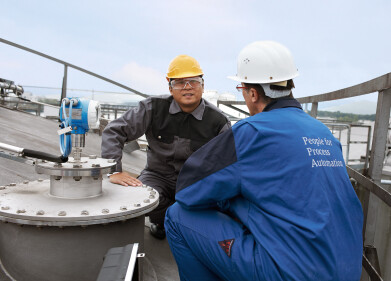Analytical Instrumentation
What Are the Different Types of Furnace?
Aug 15 2021
Furnaces are a key component of combustion analysers, specialised instruments used to measure parameters such as stack temperature, gas levels, excess air and flue pressure. Results are used to calculate the combustion efficiency of oil and gas equipment and minimise the risks of dangerous operating conditions.
Within the analytical market, the debate over horizontal vs vertical furnace setups is ongoing. Performance is a top priority when manufacturing combustion analysers, with engineers continually searching for new ways to improve efficiency, accuracy and precision. While some analysts assert horizontally placed furnaces deliver the best performance, others advocate for vertical setups. Below, we take a look at both options and explore the pros, cons and applications.
Horizontal furnace setups
As the name suggests, this setup features a horizontally placed furnace. The Xplorer TNTS from TE Instruments is one of the best-selling combustion analysers on the market, with a horizontally placed furnace and boat inlet system that’s ideally suited to solid samples. The horizontal setup means samples can be directly placed into a quartz boat capable of withstanding extremely high temperatures of up to 1000°C. A mechanism is used to move the boat in and out of the furnace, with speed and repetition determined by the unique characteristics of the sample.
A separate liquids injection module is set at a temperature of 500 °C and used to evaporate the sample in the furnace. For safe and accurate operations, the maximum boiling temperature for liquid samples inserted into the Xplorer TNTS furnace is 420°C. This prevents build-up of sample material and ensures results are reliable and accurate.
Vertical furnace setups
Vertical setups feature upright furnaces suitable for hydrocarbon samples with higher boiling points. The new Xplorer-V from TE Instruments is one of the latest models to feature a vertical furnace and has redefined combustion analyser technology. Designed to calculate total sulphur and total nitrogen levels in hydrocarbon products with boiling points of between 25°C and 520°C, the analyser injects samples into a pre-combustion inlet before sending them to the vertically placed combustion chamber. The clever design ensures full combustion and minimises the risk of deposit build-ups, even for hydrocarbons with high boiling points. Vertical placement of the furnace also helps the sample sink to the bottom of the combustion chamber, which is hotter and assists in full combustion.
A combination of UV-fluorescence and chemiluminescence technology is used to detect traces of sulphur and nitrogen in the samples. It builds on the success of the Xplorer TNTS, offering the same repeatability and reproducibility performance couples with excellent accuracy.
Want to know more about the differences between horizontal and vertical furnace setups? TE Instruments representative Sebastian Sanchez explores the debate further in ‘Total Sulphur and Total Nitrogen analysis – Horizontal versus Vertical furnace arrangement’.
Digital Edition
PIN 25.1 Feb/March
March 2024
In This Edition Safety - The technology behind the ION Science Tiger XT - Safety with ammonia and LOHCs as hydrogen carriers Analytical Instrumentation - Discussion on new tribology te...
View all digital editions
Events
Apr 22 2024 Hannover, Germany
Apr 22 2024 Marrakech, Morroco
Apr 22 2024 Muscat, Oman
Apr 22 2024 Rotterdam, Netherlands
Apr 23 2024 Singapore


















